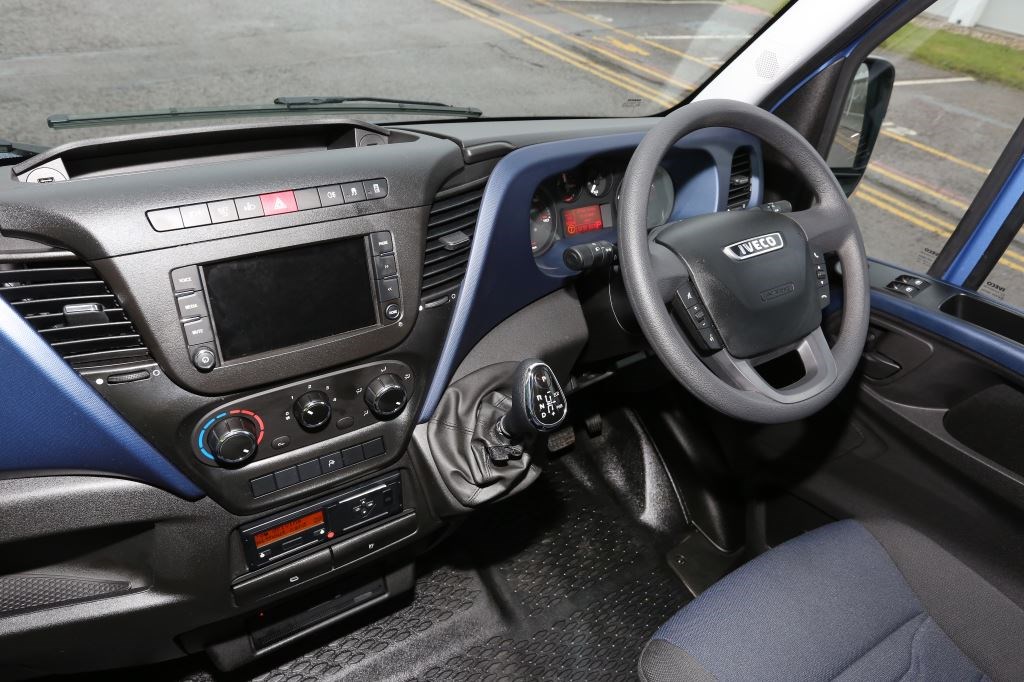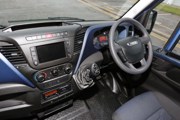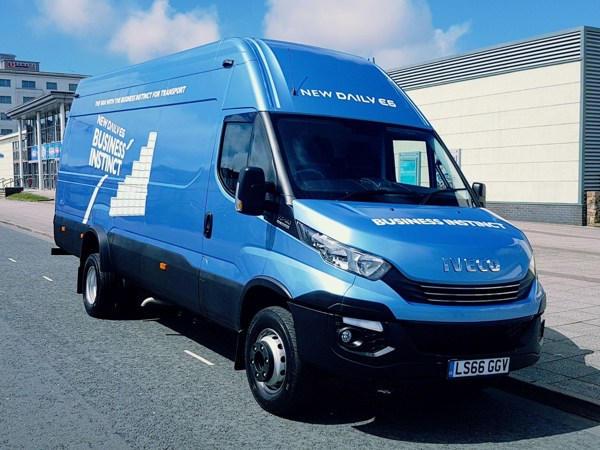Review
Commercial vehicle operators seeking an urban delivery vehicle to carry around a three-to-four- tonne payload virtually sleepwalk into considering the traditional chassis cab and box body offering from the likes of DAF and MAN.
That approach has stood many operators in good stead for several years. However, with the ever-increasing kerbweight of post Euro VI vehicles needing to cope with the extra weight of after-treatment solutions such as diesel particulate filters, exhaust gas recirculation and selective catalytic reduction systems, the squeeze has been on payloads.
Iveco entered the chassis-based van sector with the launch of the Daily in 1978, and, given the payload squeeze, maybe, just maybe, this vehicle is coming into its own after so many false starts.
The combination of a durable chassised van matched to an ever-increasing load area cubic capacity, gross vehicle weight (gvw) and subsequent payload potential means the Daily’s perfect storm may be in the offing.
Let’s face it, the Iveco Daily has always been considered slightly overweight at the standard European 3.5-tonne gvw and therefore faced an eternal payload challenge. But moving up the weight range and challenging the domain of the 7.5-tonne trucks could open up its potential.
It’s also a great alternative for customers operating the Japanese-style lightweight products such as those offered by Fuso and Isuzu.
The 3.5-tonne gvw Daily has been around for a long time but the newer upmarket seven-tonne gvw is a more recent addition with the van version leading the way in load cargo capacity at 19.6 cubic metres.
The modern-looking new style Euro VI (E6) range is split between the Hi-Matic version featuring the impressive and exclusive ZF eight-speed automated gearbox and the more standard Daily with a six-speed manual gearbox.
It’s the only van/chassis that covers the weight range from 3,300kgs to 7,000kgs gvw with subsequent payloads from 3,600-4,600kgs and cargo volumes from 7.3 to 19.6 cubic metres, making it a truly impressive range of vans and chassis cabs.
As we are road testing the largest van in this edition, we will concentrate on the Daily van specification and range.
Daily’s power requirements are provided by a 2.3-litre diesel engine. Surprisingly for an Euro VI, it functions without AdBlue (Selective Catalytic Reduction – SCR) and operates at three power ratings of 116PS, 136PS and 156PS and torques of between 320Nm to 360Nm.
The 3.0-litre F1C does use AdBlue and also offers three power settings but this time at 150PS, 180PS and 210PS with torque setting varying between 350Nm and 470Nm.
As mentioned previously there’s the option of an eight-speed ZF automated gearbox but we drove the more traditional six-speed overdrive manual in our road test.
Of course, the mechanical aspect of engines is just one side of the story and Daily’s engine software package includes an EcoSwitch Pro programme that intervenes automatically to reduce the torque, helping to cut fuel consumption.
The chassis cab has six wheelbases and the vans have three, with five load lengths ranging from 2,610mm to 5,125mm and three roof heights covering 1,545mm to 2,100mm, meaning load cargo capacities range from 7.3 cubic metres to a massive and class-leading 19.6 cubic metres.
The front suspension is independent using quad tor, incorporating torsion bars, with rear suspension provided by semi-elliptical springs. All have anti-roll bars and twin shock absorbers.
The dual circuit braking features full disc brakes with floating callipers with auto wear adjustment all round and a mechanically-controlled parking brake. Daily also has the latest generation ESP9 system which incorporates many familiar features. In addition, extra advanced systems include hill hold, load adaptive control, trailer sway mitigation, roll movement intervention and roll over mitigation.
For our test we picked the 70C18 with the biggest van volume of 19.6cu m, and, be under no illusion, as you approach the largest van on the market you realise this has a presence about it, it just looks big. As you enter the cab the mixture of blue and black helps create a relaxed and modern atmosphere. This is also complemented by the revised dashboard layout, which is split into three.
In front of the driver and steering wheel is the instrument panel providing the standard speedo, rev counter and centre LCV screen with information data. To the left, just past the gearshift lever, are the heating and ventilation controls, and on top of these sits a large infotainment system, incorporating a mobile phone cradle/holder.
Storage is provided by compartments for bottles, and shelves in overhead console and at floor level below the two fixed-bench passenger seats. Speaking of seats, the driver’s one is three-way adjustable and it doesn’t take long to find a comfortable position.
Cab noise on start-up is well below that in the older Dailys and on a par with many of its competitors. The driving position is excellent and, as you engage the 180PS engine via the first gear, there’s little drama as it reaches the legal 56mph. The Hi-Matic shifts up effortlessly and this is a revelation in urban van driving.
Iveco says it has increased the glass area in the cab and that certainly helps with the visibility.
The suspension system stops nearly all of the body roll that I expected on a van this size and it acted differently compared to many of the 17cub m 3.5 tonners I have driven over the years, with much better road control.
Verdict: There is no doubt, if Iveco markets and targets this at a certain set of operators delivering four-to-five tonnes in an urban environment, the Daily has the potential to offer a set of unique solutions which for many fleets could be too great to ignore.









 Diesel
Diesel












